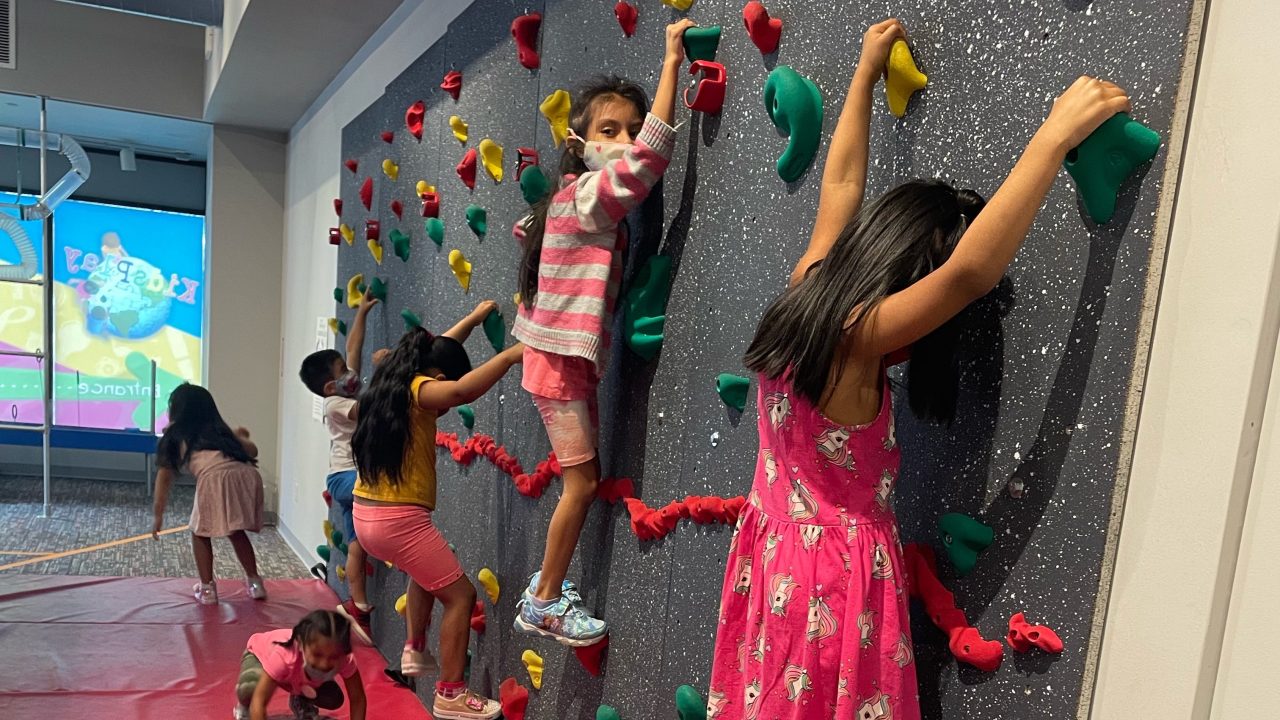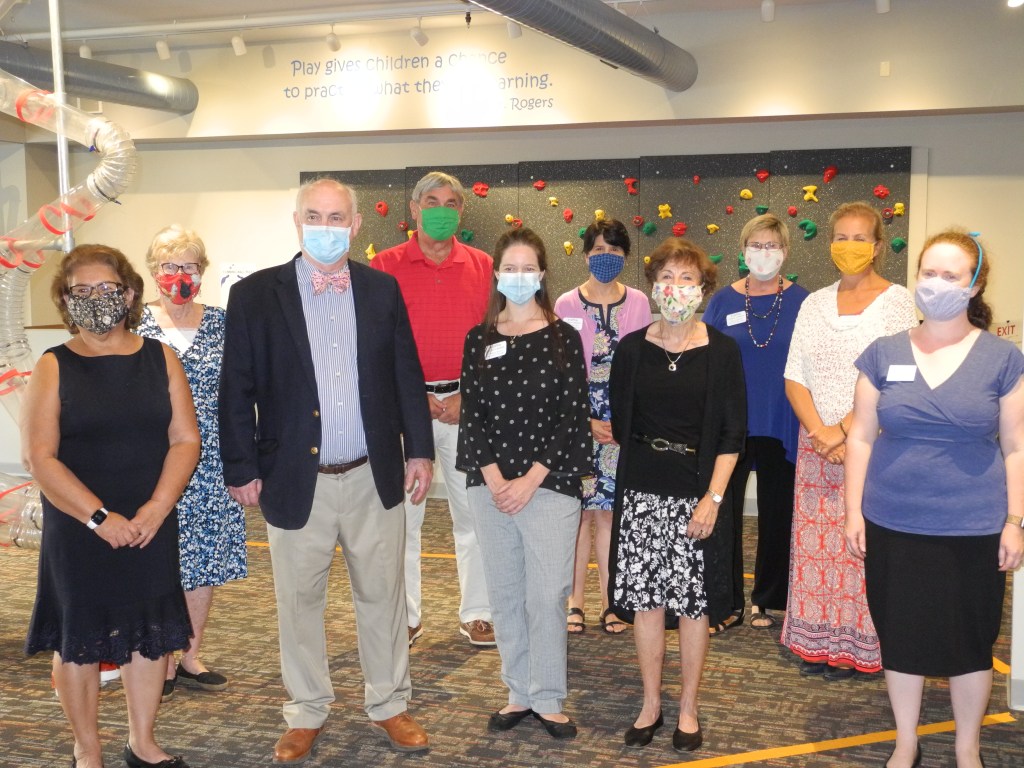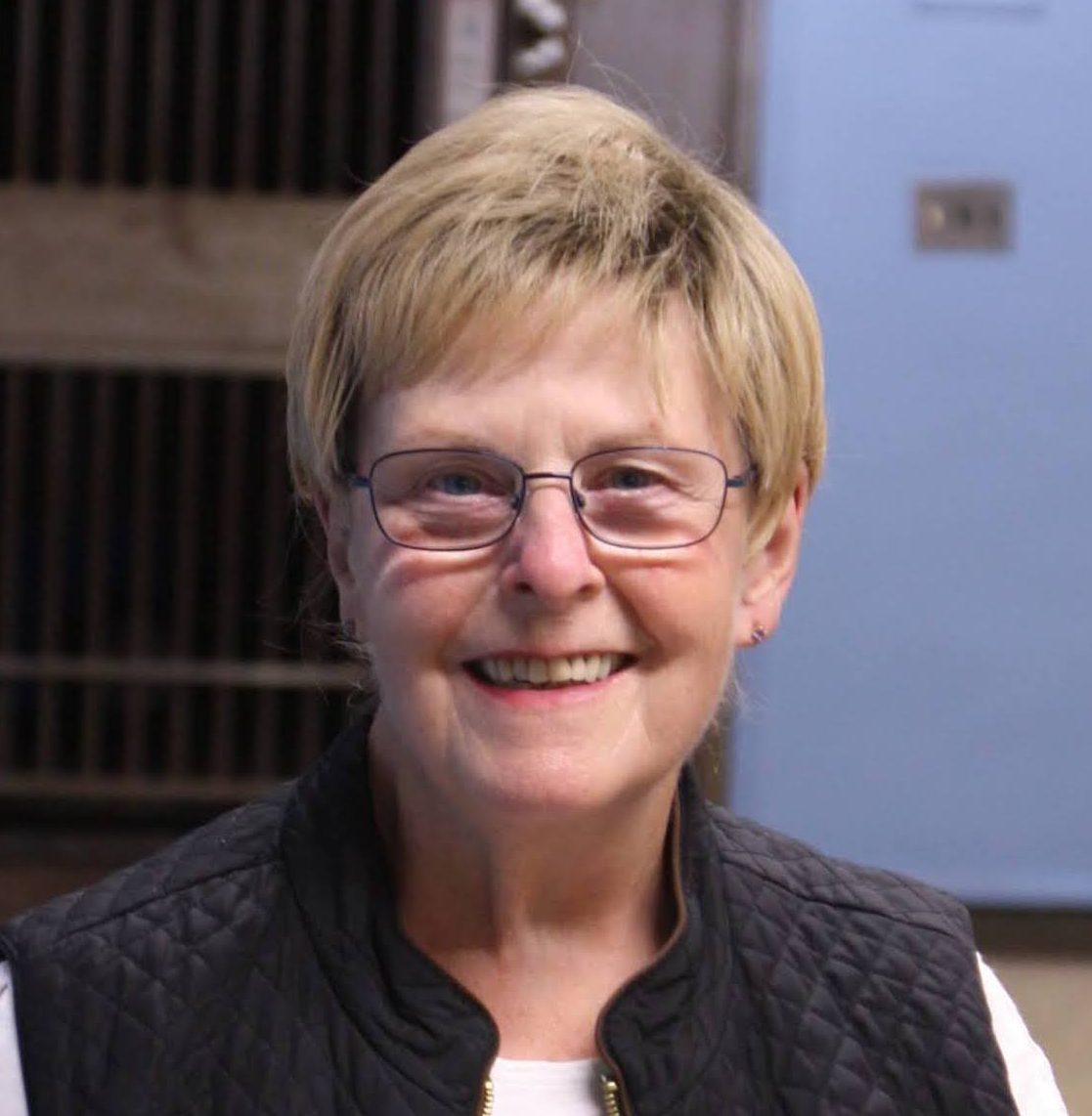
Through the Museum Assessment Program, museums gain perspective on how to improve core areas of their operations, with a combination of guided self-reflection and close consultation with an expert Peer Reviewer. One of the many museums that have transformed their practices through this process is the KidsPlay Children’s Museum in Torrington, Connecticut, which recently completed a Community and Audience Engagement assessment. In this post, a board member shares how the assessment helped the museum understand, serve, and impact its community with a new clarity of purpose.
After eight years of operating the KidsPlay Children’s Museum in Torrington, Connecticut, the board of directors decided it was time to pause and take stock. In that time, the museum had seen tremendous growth as a standalone independent nonprofit, and now we had to make choices about how to move forward and make the most impact. For instance, we had just acquired a building adjacent to the existing galleries, and we wanted to find the best way to use it, particularly in light of changes happening in Torrington and the surrounding communities.
Torrington is the economic center of Litchfield County and provides all its public services, meaning it must serve a wide range of residents, from the county’s most to least advantaged citizens. The overall population is both aging and diversifying. As of now, Torrington is primarily a middle-class city made up of families with deep roots in the community, most of whom arrived in successive waves of immigration from various countries when the city was a manufacturing center. The majority of those families are from white non-Hispanic backgrounds, but more recent immigrants are primarily Latinx.
These demographic trends suggest that to sustain itself into the future, the region must create a community that promotes diverse participation and attracts more young families to move in. To play our part in creating that diverse and family-friendly community, the museum wants to help all children who live here to thrive. But to do that, we knew we needed a better understanding of both our current audience and our potential audiences, to know how we could potentially impact audiences from our broad and diverse catchment area.
KidsPlay was ready to move to a new level of involvement with the community. We had developed and begun implementing a well-defined Learning Framework for exhibits and programs. The staff was experienced, flexible, and dedicated. The board of directors was moving from a working board to a governing board. Several successful collaborations with our Main Street nonprofit neighbors and the local school district had shown us the eagerness others in the community felt about leading the region in a positive direction.
This was the perfect juncture to participate in a Community and Audience Engagement assessment from the American Alliance of Museums (AAM) Museum Assessment Program (MAP). The MAP review allowed us to focus intensely on creating a museum that meets the needs of diverse audiences and achieves financial sustainability in the process. It gave us the opportunity and the tools to do the research, thinking, and analysis that would meet our objectives and create a firm foundation upon which to build.
Our fruitful year-long journey began in 2020. We formed a MAP team which included a range of members (a retired nonprofit executive director, a Latina attorney, a community organizer, and a nonprofit consultant) from a variety of towns in our catchment area, as well as the Museum Director and Operations Manager. Three board members (two of whom had extensive experience in program evaluation) led the initiative. This mix of talents, expertise, and abilities proved very successful. We were pleased that staff did not need to lead the project themselves, especially because the launch coincided with everyone being at home during the onset of the pandemic. Because of this, we also had more opportunity and time to focus on the process than we might have had in normal circumstances. Almost all of our work, including most meetings with our Peer Reviewer, was conducted virtually. We were, however, able to host an in-person Peer Reviewer site visit with a limited number of participants and social distancing.

The process began with the program’s initial steps of self-assessment through core standards and workbook exercises. Because many of these activities focus on data collection, the team became deeply aware of issues in the nine communities we examined. Some of the insights included that:
- There were high poverty rates and numbers of disengaged youth in the surrounding communities, which are usually seen as privileged and have graduation rates in the ninetieth percentile.
- Societal issues (such as opioid addiction, dropout rates, and unemployment) affected the more affluent communities to a greater extent than we had assumed.
- There were polarized opinions regarding the migration of Latinx families to Torrington.
- The Spanish-speaking population in Torrington schools comprised nineteen countries and cultures of origin.
- Illiteracy among the migrant families had a negative impact on children’s educational opportunities, despite schools attempting outreach and assistance with technology.
- Torrington is responsible for the social services for 180 thousand people within the region.
Through more than fifty interviews with community members, we also gathered information about how the broader community saw KidsPlay. Most people who were aware of the museum believed it was an educational, social, and cultural asset to the community. However, many commented on inequities in access to the museum for all of the children in our area. Many other respondents were unaware of the museum and its value at all.
At the end of our information-gathering period, the team agreed we had a greater appreciation for the message about “social bridging” that was stressed in so many of the articles and videos that were provided by MAP. We began to see that the museum had the power to transform what is happening outside its doors, not just inside them. One of the ways we could do this was by exposing the residents of our county, who live in suburban and rural towns that are not diverse, to more diversity than they experienced in their daily lives. Indeed, many parents told us that they already valued bringing their children to KidsPlay for this reason. They enjoy the chance to interact with the range of groups who visit the museum, which in addition to the majority demographics of the county include:
- Families who participate in our early learning playgroup, most of whom are lower socioeconomic status and Spanish-speaking
- Economically disadvantaged members (who have free access) who are identified and referred through community partners
- Museums for All patrons
- Weekend visitors from New York
- Hasidic community members from a nearby larger city
The next step in our MAP journey was to examine our practices. We found the MAP workbook’s “Stop, Start, Continue” activity to be a great tool; we did, however, switch the order to “Continue, Start, Stop.” We wanted to begin by acknowledging what we already had right—and there was a lot. The “Life Cycle of Nonprofits” activity, which we completed as a full board, gave us a rubric for growth. We could see that we were on the right track—our museum was beyond the adolescence stage of growth and moving toward maturity.
Going forward, we knew we could capitalize on our existing collaborations with nonprofit agency partners and the district public and private schools. We chose to target, develop, or expand certain initiatives, including offering programs for English language learners, broadening our influence with the early childhood community, enhancing the STEM aspects of our exhibits, and developing a process for providing community memberships. Improving diversity, equity, accessibility, and inclusion emerged in our discussions as one of our strongest priorities.
When the time came to meet with our assigned MAP Peer Reviewer, Dr. William “Mac” Sudduth, we had identified six strategic priorities and developed a SMART chart from the MAP Workbook to guide our implementation. We incorporated Mac’s input about the importance of expanding our patronage and broadening our age range into our plans. His guidance and advice helped us stay focused. The board was able to take the feedback and see the delicate balance between the critical needs of the community and the sustainability of the museum, and assess what needed to be incorporated to achieve success for both.
The MAP assessment identified social isolation, poverty, and disrupted school and childcare as critical social issues impacting children in our community. We concluded that KidsPlay, as a safe space for social engagement and informal learning, is uniquely suited to address these issues. Our social service agency partners identified our exhibit galleries as a venue for community-based interventions, where disadvantaged children would significantly benefit from the sense of normalcy and enrichment. However, these partners also identified that our eight-dollar admission fee, though modest relative to other museums, is still a barrier to some families. In response, KidsPlay launched “A Museum for the Community,” our initiative to offer free or subsidized admission tickets and memberships. We engaged a network of social service partners to distribute the passes and promote purposeful play. The successful launch of this initiative included generous support from several grantors, crowdfunded donations, prizes, and bonus funds from the Connecticut Community Foundation’s Give Local campaign. Responding to the inequity in access was the first strategic priority implemented and achieved.
Engaging patrons and partners as more than audiences became the next focus of our MAP planning and prioritization. We decided to use the “Community Conversation” tool, which involves hosting structured, small-group discussions with members of a specific and/or unique community designed to better understand their thoughts and views on particular topics. Through this tool we held strategic discussions, identified issues in the community, and gave members of the community ownership in establishing the direction of the museum for the future. We planned meetings with people from many sectors, including our nonprofit partners, the manufacturer’s coalition, area businesses, area educators, faith-based organizations, the Latinx community, and museum members. Grouping people based on shared interests and knowledge proved useful. We successfully held several community conversations virtually and a final one face-to-face. We have learned so much from this process, most importantly that it is not scary to ask people what they think the museum should be doing if the conversation is structured, asking very specific questions, and letting the participants know the objectives in advance and creating breakout groups.
Our best-attended and most dynamic virtual discussion was with our nonprofit partners with whom we were already collaborating. For the Latinx community, who met at the museum, conducting the discussions in Spanish (with facilitators from area agencies) was key to free expression of ideas and perceptions. During this discussion, one participant said she had been told KidsPlay was for “American” children, implying that immigrant families were not welcome. The MAP process had prepared us to hear this hard message, which verified that the perceptions we had gleaned from our data collection were real. It also helped us feel empowered to work harder to dispel this perception. We believe MAP was essential to our expanded understanding and direction.
The impact of MAP continues. In July, KidsPlay debuted a summer enrichment camp in collaboration with Torrington Public Schools, our first-ever program where children could be dropped off without parents or guardians. Our peer reviewer had encouraged us to explore such noncustodial opportunities in order to expand our impact and sustainability. It represented a big growth step for the museum. The cohort this summer included ten eager children aged five to eight from households where English is not the primary language.

A day at camp included facilitated exhibit explorations, literacy programs, artmaking, games, STEM experiments, and of course, unstructured free play! The campers explored their community with field trips: they attended in-depth programs at Five Points Gallery and Nutmeg Ballet Conservatory; they toured the Warner Theatre, the Hotchkiss-Fyler House, and the Torrington History Museum; and they traveled by bus to the Tapping Reeve House and Litchfield Law School for a bilingual storytime and workshop, Wonders of the Garden, in the Tapping Reeve Meadow. In addition, we have been joined by a new Latina board member, and we are working to increase access to Spanish speakers by providing our museum information and scheduling story times in dual languages. In our new space, we are planning a Community Hub, a space to bring together organizations that are focusing on the welfare of children and families, further positioning the museum as a safe place and a connector.
Mac Sudduth’s suggestions and advice regarding expanding STEM were also well received. Math and science educators from the community were invited to conduct “audits” of existing exhibits and provide us with ideas for potential programs, related activities, and extensions to current exhibits. We have developed a schedule for implementing the invaluable input and recommendations they shared.
There remain questions we have yet to answer, such as, “How can a children’s museum influence the number of disengaged youth in the region?”. This question has a broad impact on how we look at our engagement of children, how we help them develop curiosity, executive function, and multicultural literacy through hands-on multisensory play, and how we maintain them as active members of the museum audience from preschool through graduation from high school and beyond, when they return to the community to visit, work, or live on a permanent basis. It also impacts how we engage caregivers in the community.
The six strategic priorities that we developed during MAP have driven the development of a KidsPlay Strategic Plan for 2021–2024, created with input from all board members and staff.
We will remain focused on impact. KidsPlay Children’s Museum, from its inception, has worked to become a community hub and educational resource for all members of a diverse community. We envision it as an organization that will partner and collaborate to meet the socioeconomic and educational needs of the Northwest Connecticut community. Our ultimate goal is for KidsPlay Children’s Museum to be the model for all organizations, businesses, and institutions, demonstrating the ideal way all establishments should operate to promote the overall success of the community in which they are located. Thanks to MAP, KidsPlay Children’s Museum will be “a bridge to the outside.”
MAP is supported through a cooperative agreement between the Institute of Museum and Library Services and the American Alliance of Museums.








